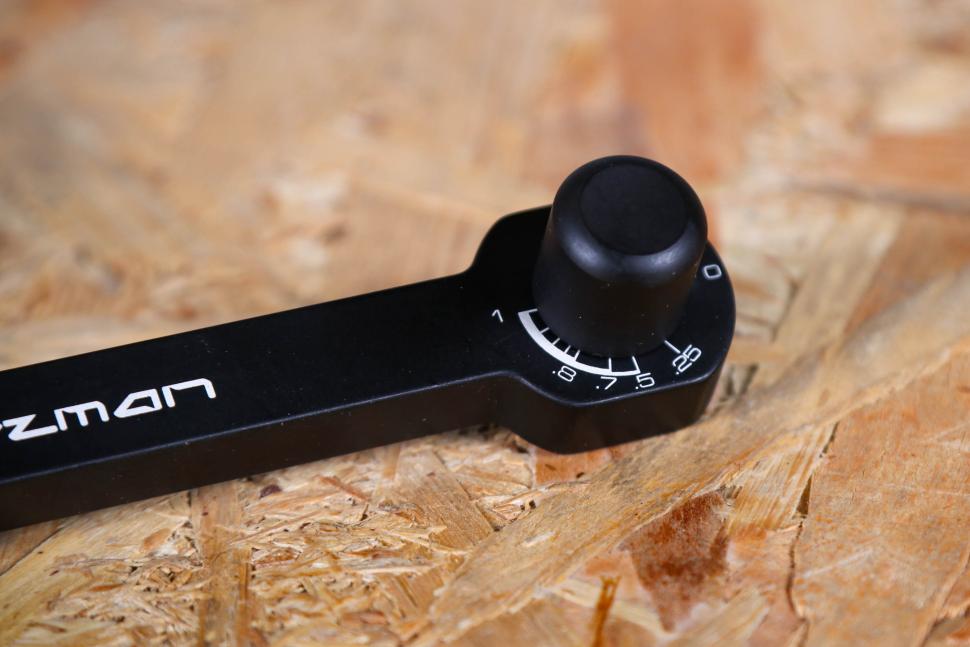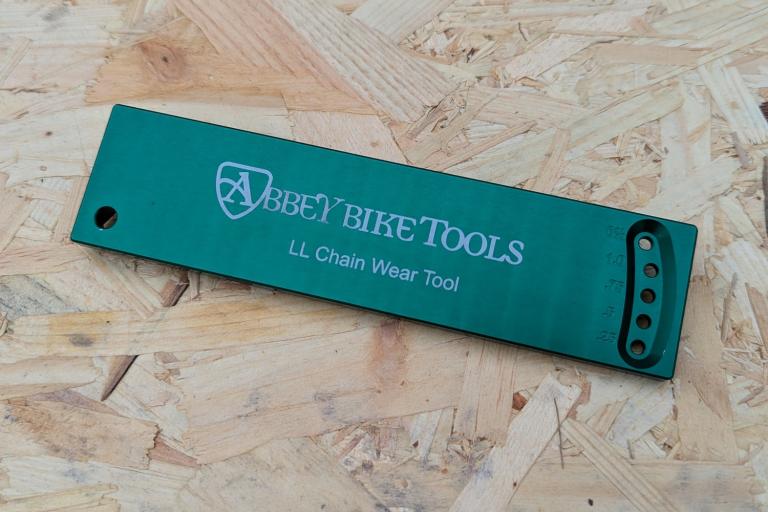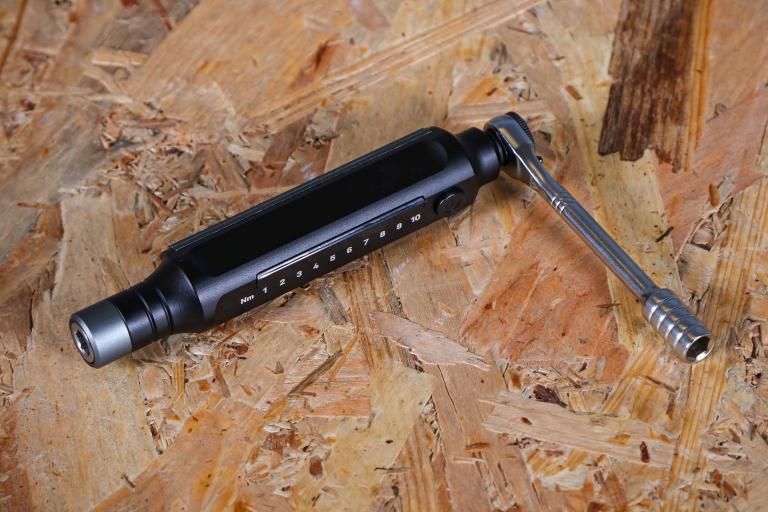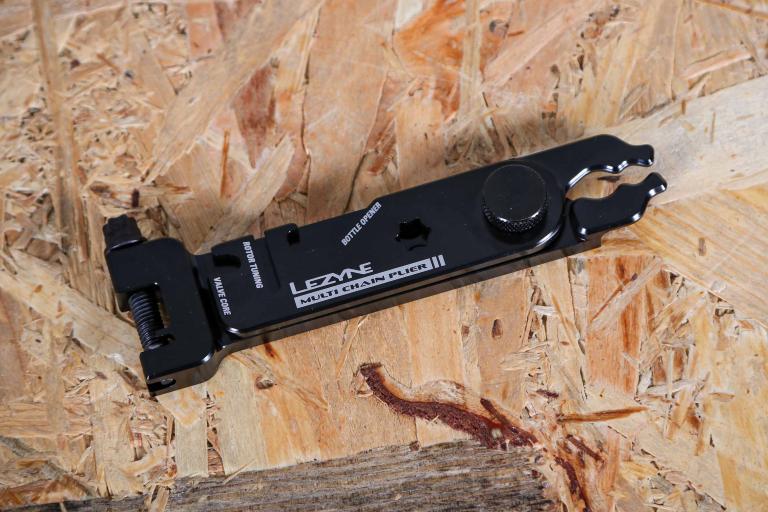- News
- Reviews
- Bikes
- Components
- Bar tape & grips
- Bottom brackets
- Brake & gear cables
- Brake & STI levers
- Brake pads & spares
- Brakes
- Cassettes & freewheels
- Chains
- Chainsets & chainrings
- Derailleurs - front
- Derailleurs - rear
- Forks
- Gear levers & shifters
- Groupsets
- Handlebars & extensions
- Headsets
- Hubs
- Inner tubes
- Pedals
- Quick releases & skewers
- Saddles
- Seatposts
- Stems
- Wheels
- Tyres
- Tubeless valves
- Accessories
- Accessories - misc
- Computer mounts
- Bags
- Bar ends
- Bike bags & cases
- Bottle cages
- Bottles
- Cameras
- Car racks
- Child seats
- Computers
- Glasses
- GPS units
- Helmets
- Lights - front
- Lights - rear
- Lights - sets
- Locks
- Mirrors
- Mudguards
- Racks
- Pumps & CO2 inflators
- Puncture kits
- Reflectives
- Smart watches
- Stands and racks
- Trailers
- Clothing
- Health, fitness and nutrition
- Tools and workshop
- Miscellaneous
- Buyers Guides
- Features
- Forum
- Recommends
- Podcast
review
 2023 Birzman Chain Wear Indicator 2 - 1.jpg
2023 Birzman Chain Wear Indicator 2 - 1.jpg£26.99
VERDICT:
User-friendly precision tool for checking chain health
Accurate
Compact
Simple to use
Light
Pricier than traditional gauges
Weight:
43g
Contact:
At road.cc every product is thoroughly tested for as long as it takes to get a proper insight into how well it works. Our reviewers are experienced cyclists that we trust to be objective. While we strive to ensure that opinions expressed are backed up by facts, reviews are by their nature an informed opinion, not a definitive verdict. We don't intentionally try to break anything (except locks) but we do try to look for weak points in any design. The overall score is not just an average of the other scores: it reflects both a product's function and value – with value determined by how a product compares with items of similar spec, quality, and price.
What the road.cc scores meanGood scores are more common than bad, because fortunately good products are more common than bad.
- Exceptional
- Excellent
- Very Good
- Good
- Quite good
- Average
- Not so good
- Poor
- Bad
- Appalling
The Birzman Chain Wear Indicator II is designed to measure wear in traditional 3/32in chains across the board, from singlespeed to 12-speed. This caters for most scenarios, save for track and some hub transmissions. It's nicely engineered and pleasant to use, and though digital gauges may have the last word in accuracy and precision, they're a good bit more expensive, too.
Looking to do your own bike fettling? Check out our feature on the six essential tools for cyclists who do their own bike maintenance, as well as our beginner’s guide to bike tools.
Birzman has gone for CNC machined 6061 aluminium for this model. The anodised finish and laser-etched graphics are beautifully applied, and will protect the aluminium from oxidisation.
Look closely and you'll see a dial integrated within the head, with increments of .25, .5, .7, .8 and 1; this is the wear indicator, which gives a very precise account of chain health. Some have just three figures, .5, .75 and 1.
There's plenty of debate about pensioning times for chains. I've traditionally replaced 9/10-speed chains at the 0.75 point, and left 6/7-speeds a little longer (depending on whether I was using stainless steel rings, quality of cassette/freewheel and so on). According to Birzman's chart, 11/12-speeds should be switched at 0.5; 9/10-speeds at .7; 5 to 8-speeds (yes, a few of us still run these) at .8; and singlespeeds at 1.0.
You can use a cheap and simple gauge to check chain wear, but it's a more approximate guide and could be costing you money in the long run if you're scrapping a chain prematurely. Likewise if you just go by average mileage.
In many respects, this is preferable to allowing a chain to chomp through expensive components, but costs can mount up, especially if you're running an already pricey 11 or 12-speed groupset.
Accuracy
I'm told that the Birzman measures a combination of pin and roller wear. To use it, simply drop the pins into the chain and gently rotate the top-mounted dial anti-clockwise until the figures align. Gently is key here; you don't want to force anything – it's bad practice and will also give a false reading.
Top-mounting the dial might seem a simple thing, but it makes a world of difference ergonomically. Sure, reading a gauge side-on is neither here nor there if you've got the bike in a workstand, but it's a pain if you're just in 'while I'm thinking about it' mode. Besides, if something's nice and user friendly, we're more likely to use it.
I've tested the Birzman on 11, 10, 7 and 6-speed chains, some nigh-on packet fresh, some closer to the knacker's yard. Cross-referenced with a digital KMC unit, it seemed perfectly accurate.
None of my chains needed replacing, although a 6-speed Sachs, fitted to my 1991 road bike (a quaint, but much-loved sunny days plaything), was creeping close to .6; by contrast, a cheap and cheerful nickel-plated gauge suggested it was nearer to .7. Okay, hardly the biggest thing in the world, but it illustrates my earlier point about otherwise serviceable parts being scrapped prematurely.
Value
I'll preface this by saying much will depend upon how many bikes you have and their drivetrains. If you're running 5 to 10-speed setups then something simple like the £5.99 Torque Chain Checker will suffice.
Comparing like with like, though, the Birzman is well priced.
Park Tool's Chain Checker CC-2 is £29.99. It caters for up to 12-speed chains and has a 'fan type' analogue gauge. It's a perfectly accurate benchmark in my experience but, for me at least, it's less intuitive/user-friendly than the Birzman.
Unior's Pro Chain Wear Indicator seems very similar to the Birzman, but it's more expensive at £31.99.
Of the more traditional gauges, the Pedro's Chain Checker Plus II is a three-point model featuring a laser-cut design, and capable of isolating pin and roller wear. The chain hook and chainring wrench are nice touches, and it's also a little cheaper than the Birzman at £22, but won't be as pleasant or convenient to use as the Birzman with its top-mounted dial.
Conclusion
Ultimately, the Birzman Chain Wear Indicator II is an effective and accurate tool that's pleasant to use. Don't lose it, drop it or lend it to casual acquaintances and it should repay its investment many times over, especially if you have a fleet of bikes, with 11 or 12-speeds among them.
Verdict
User-friendly precision tool for checking chain health
road.cc test report
Make and model: Birzman Chain Wear Indicator II
Size tested: n/a
Tell us what the product is for and who it's aimed at. What do the manufacturers say about it? How does that compare to your own feelings about it?
Birzman says: "Compatible with derailleur chains from single to 12 speed, the Chain Wear Indicator II quickly and accurately checks the degree of chain wear.
Constructed from CNC machined 6061 aluminium, the tool will ensure it does the job and lasts the long years in your tool box."
It's a compact, accurate, and user-friendly means of checking chain health.
Tell us some more about the technical aspects of the product?
Birzman lists:
Material
CNC machined 6061 aluminium
Indications
0.25 / 0.5 / 0.7 / 0.8 / 1.0%.
Compatible with
single - 12 speed chains (3/32 only)
Rate the product for quality of construction:
8/10
Light, tactile, and nicely engineered.
Rate the product for performance:
8/10
Accurate and pleasantly intuitive to use.
Rate the product for durability:
8/10
Little reason to think it won't lead a long and productive life. Finish and build quality seem of a very high standard. Two accidental drops onto a concrete floor have made negligible impression on the anodised finish.
Rate the product for weight (if applicable)
9/10
Feathery but feels solid.
Rate the product for comfort (if applicable)
8/10
Small but comfortable in the hand.
Rate the product for value:
6/10
There's lots of choice around if you're looking to gauge chain wear. Something like the Torque Chain Checker might be the most cost-effective solution if you weren't requiring absolute accuracy and/or ride bikes with older groupsets. However, there are pricier options too, such as the Unior Pro Chain Wear Indicator at £31.99.
Tell us how the product performed overall when used for its designed purpose
Overall, I've found the Birzman intuitive, quick, and accurate to use.
None of my chains needed replacing, although a 6-speed Sachs was creeping close to .6. By contrast, a cheap but cheerful nickel-plated gauge suggested it was nearer to .7. Hardly the biggest thing in the world but illustrates how otherwise serviceable parts can be scrapped prematurely.
Tell us what you particularly liked about the product
Nice ergonomics, quick and accurate to use.
Tell us what you particularly disliked about the product
Nothing.
How does the price compare to that of similar products in the market, including ones recently tested on road.cc?
If you're running 5 to 10-speed setups then something cheap and simple like the £5.99 Torque Chain Checker will suffice.
Comparing like with like, though, the Birzman is quite well priced. Park Tool's Chain Checker CC-2 is £29.99. It caters for up to 12-speed chains and has a 'fan type' analogue gauge. It's a perfectly accurate benchmark in my experience but, for me at least, is less intuitive/user-friendly than the Birzman.
Unior's Pro Chain Wear Indicator seems very similar to the Birzman but it's more expensive at £31.99.
Of the more traditional gauges, the Pedro's Chain Checker Plus II - a three-point model capable of isolating pin and roller wear, with a chain hook and chainring wrench - is a little cheaper at £22, but won't be as pleasant or convenient to use as the Birzman with its top-mounted dial.
Did you enjoy using the product? Yes
Would you consider buying the product? Yes
Would you recommend the product to a friend? Yes, particularly if running bikes with 11 and 12-speed drivetrains.
Use this box to explain your overall score
It's surprisingly pleasant to use and very accurate. Those with older drivetrains may find a less precise model will fit their needs, but overall I'd say the Birzman is very good.
About the tester
Age: 49
I usually ride: Rough Stuff Tourer Based around 4130 Univega mtb Frameset My best bike is: 1955 Holdsworth Road Path and several others including cross & traditional road
I've been riding for: Over 20 years I ride: Most days I would class myself as: Experienced
I regularly do the following types of riding: cyclo cross, commuting, touring, fixed/singlespeed, mtb,
Shaun Audane is a freelance writer/product tester with over twenty-eight years riding experience, the last twelve (120,000 miles) spent putting bikes and kit through their paces for a variety of publications. Previous generations of his family worked at manufacturing's sharp end, thus Shaun can weld, has a sound understanding of frame building practice and a preference for steel or titanium framesets.
Citing Richard Ballantine and an Au pair as his earliest cycling influences, he is presently writing a cycling book with particular focus upon women, families and disabled audiences (Having been a registered care manager and coached children at Herne Hill Velodrome in earlier careers)
Latest Comments
- Aluminium can 2 hours 14 min ago
Its not a booby trap as it says clearly right on the side the outcome of cutting it. The same as aerosol paint cans have warnings not to...
- eburtthebike 2 hours 34 min ago
A comedian with a purpose can achieve more than the politicians e.g. Zelesky.
- Hirsute 4 hours 10 min ago
Sounds a bit specific though given 90% are bought on some sort of finance.
- Rekrab 4 hours 28 min ago
MORE LANES, MORE LANES!!!!
- Simon E 4 hours 35 min ago
The numbers don't tell anything like the whole story....
- Simon E 5 hours 6 min ago
Just squirt some thick grease all over his side windows and door panels. If you're feeling really uncharitable you could throw some sand at the...
- David9694 5 hours 46 min ago
check under 'W'for "What cars do to people"
- Global Nomad 6 hours 28 min ago
good to see you're testing the farsports wheels - hope to see road.cc continue to expand the range of brands it considers. These or the shallower...
- chrisotherwise 7 hours 1 min ago
Sadly very normal. And the sand contains loads of evil little shards of flint.








Add new comment
9 comments
The Shimano TL-CN42 is IMHO the best-value 'proper' 3-point chain tool. I sell them to customers of all ages and cycling abilities, the simple drop-in and go/no-go nature is foolproof. Confirming results against a £100 digital chain tool confirms yes it's spot on, as you'd expect from Shimano.
This tool is a copy of a Park one I owned about 20 years ago. That was inaccurate and prone to being damaged, and I bet so is this one.
Hot wax your chain, and measure it with a steel rule whilst it's off - to record that it hasn't worn at all. Or don't, and use this tool to record how much it has worn!
Ah, the steel rule method. Problematic, that.
1) Is your vision 20/20 so you can read the tiny rule-increments needed? Many will find themselves peering and squinting at that rule.
2) Do all the measurers have an awarenes of parallax error? Many won't and so will misread the rule.
3) Have you got a £60 or more steel rule? Many of the cheaper sort are not accurate to a degree necessary for reading chain length increases of the teeny amounts involved. If one is, it's a lucky accident. But it might have too-thick markings an' all.
4) Has the chain been properly tensioned for the measuring? It's all too easy to lose the tension when measuring with a rule unless one has three or four hands.
In short - get a good quality chain checker of the semi-auto kind, such as this one or one of the others that also eliminates roller wear in the way that it measures. Foolproof, they are, unlike rule-reading.
********
Chain waxing - good for dry riding although any old wax won't do. (See Zero Friction Cycling for details of good & poor waxes). Not so good in the wet as it tends to wash out quite quickly, letting water in to rust your chain if you don't attend to it toot sweet when you get in out of the rain at journey's end. (Hot tea & bun beside the fire or wash your bike and re-wax your chain, as it goes all cold & dark out)?
But I'm going to give the Silca wax stuff a go. I like this talk of 30,000km from a chain before it wears to 0.5% longer! I'll never buy another cassette or chainring.
True, wax is not so good in the wet. The rest of what you wrote, er...
In cabinet-making, which I do a lot of, the use of rulers and other such measurers is discouraged; or their constant use is. It's much better to measure against a story stick.as there's no scale reading, which is a notorious cause of errors because either the scales are inaccurate/hard to see or the eye/brain or memory of the reader goes awry.
A chain checking tool is a sort of universal story stick and, assuming your get a proper one and not a stamped-out two-quidder, the chain measuring tool will give you a much more reliable indication.
Mr Mike is right about the chain measuring tools like this Birzman and the similar Park Tools item, though. The problem is that it's too easy to bend those teeny pins that stick between the rollers. If you force anything just once, it can bend the pins. Even a teeny bend spoils its accuracy.
I've come to rely on one of those 3-pointer items, from Pedro I think it is. It includes a handy clasper for holding the chain in place as you remove or replace a missing link thingy.
I tend to measure the newly installed chain just to make sure the gauge gives a sensible answer (i.e., no wear). It can also be useful to compare the old and new chain lengths for the same number of links.
I guess for best chain longevity a chain case is needed, but mudguards with coverage to prevent road dirt/spray hitting the drivetrain also helps.
This, very much this. Use my Park cc2 on new 8 or 9 speed, about 0.25, can't even fit in the chain with a new single speed KMC X1EPT for my Rohloff setup, not for a couple of weeks anyhow.
My understanding is that only pin wear is important (contributes to 'stretch'). Is this correct or does roller wear also damage the drivetrain? The Park CC-4 measures pin wear only, I think.
AFAIK it's only pin wear that's relevant though I'm getting my info from pardo.net as well. It seems odd that they've gone for a digital guage for extra precision, whilst ignoring the accuracy by measuring roller wear too.
Personally, I just use a cheap, inaccurate chain measurer as I'm just looking for an indication on whether to change the chain or not.